#Nicolas de Largillierre
Text

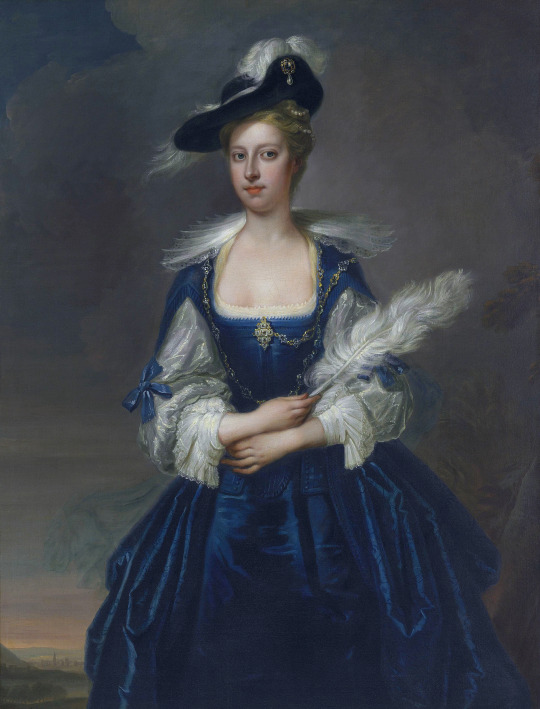
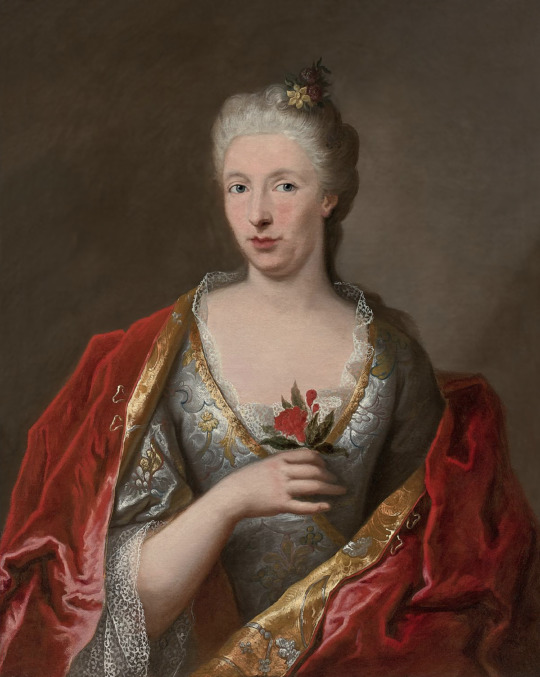
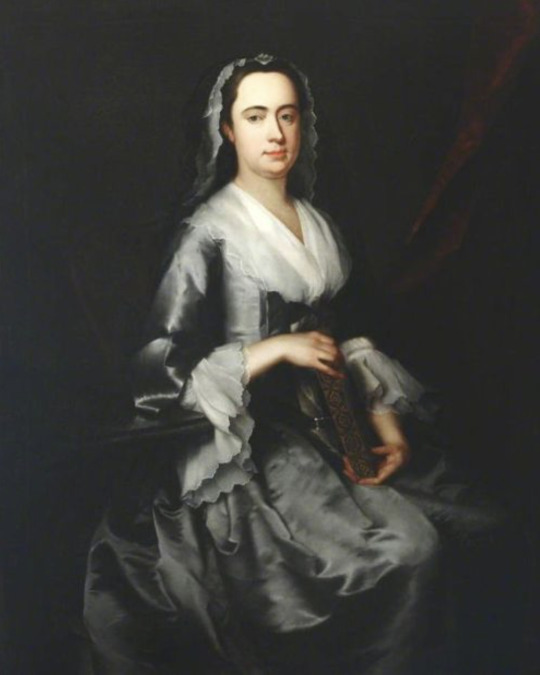
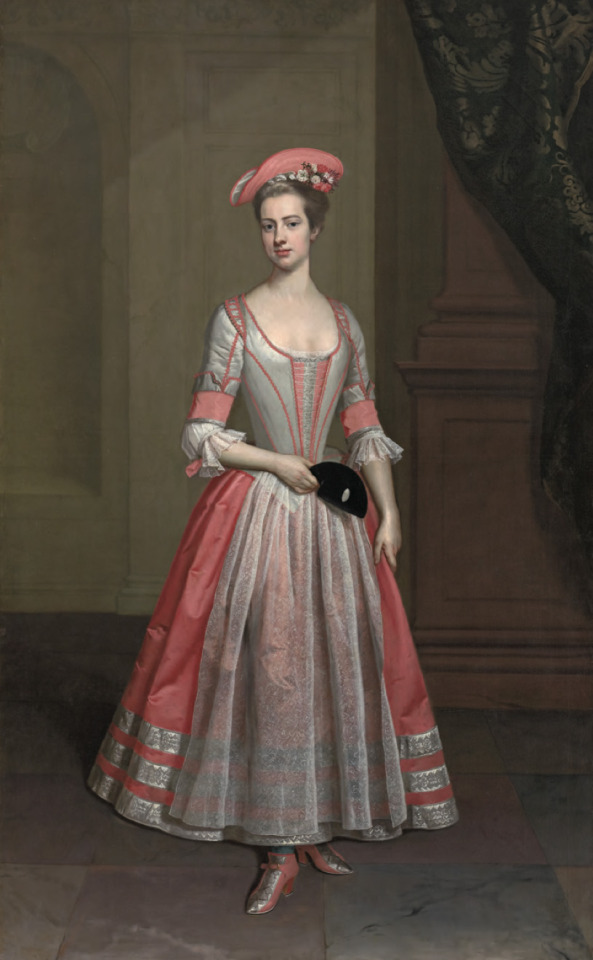
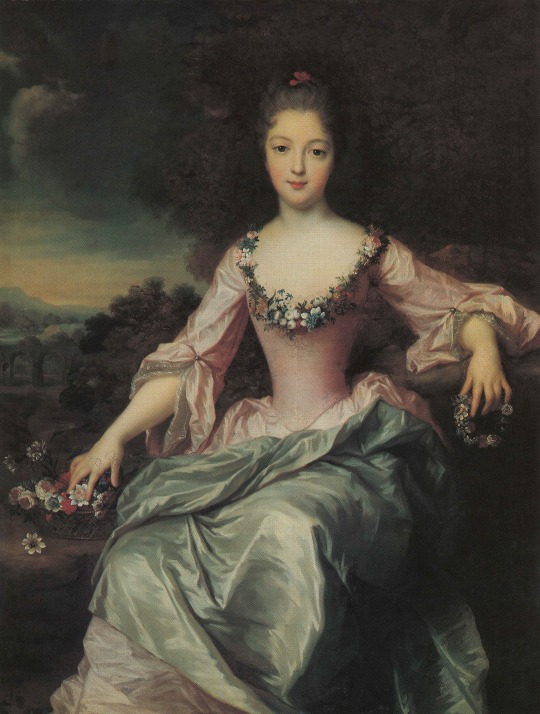

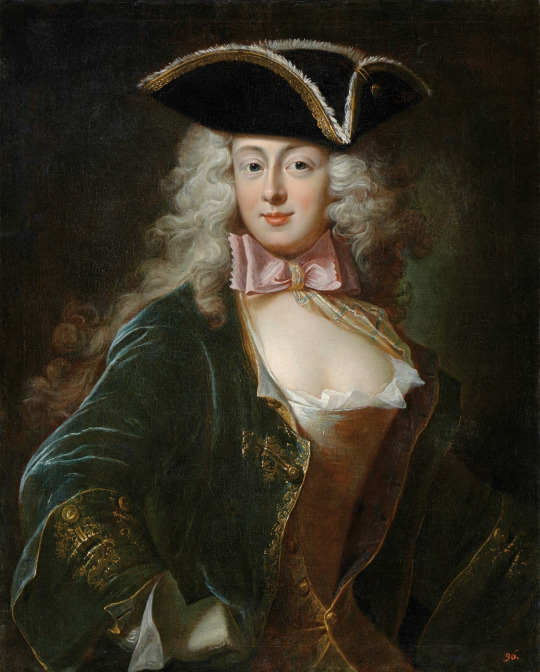

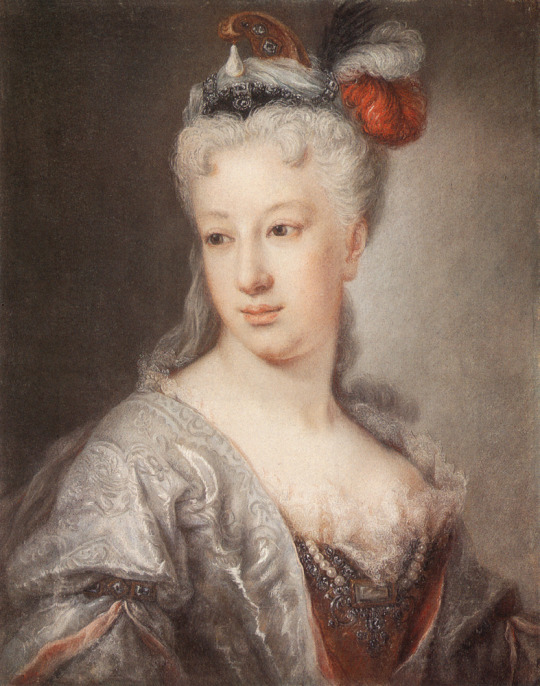

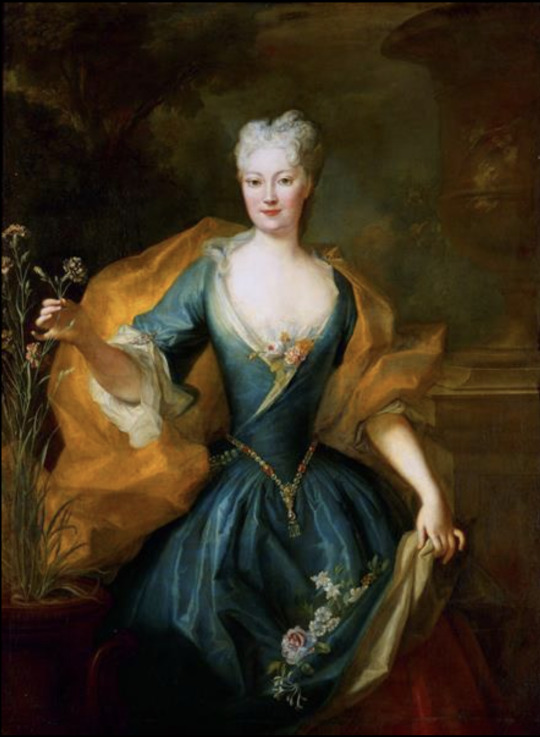

1720s dress -
Top left 1720 (probably) Princess Rakoczi by Nicolas de Largillierre (National Gallery - London, UK); From paintings-art-picture.com/paintings/archives/534/largilliere-nicolas-de-princess-rakoczi; removed spots throughout image and print in lower rt corner 152.0X2000.
Top right ca. 1720 (based on date of marriage) Elizabeth Dunch, later Lady Oxenden, by Thomas Hudson (auctioned by Christie’s). From their Web site; fixed obvious spots w Pshop 2449X3215.
Second row left ca. 1720 Dame dite madame Élisabeth Parisot by entourage of Jean-Baptiste Oudry (on auction by Tajan). From invaluable.com-auction-lot-ecole-francaise-vers-1720-entourage-de-jean-bapti-42-c-20e48bc868; fixed creases w Pshop 2990X3747.
Second row right ca. 1720 Mrs or Miss Mary Miller by the circle of Jonathan Richardson the elder (location ?). From titam.tumblr.com 1228X1536.
Third row ca. 1720 Henrietta Hobart, The Hon. Mrs Howard, later Countess of Suffolk, in a masquerade dress attributed to Thomas Gibson (Blickling Hall - Blickling, Norfolk, UK). From the National Trust's Blickling Hall Illustrated Picture List 816X1321.
Fourth row 1720 Marie Anne de Bourbon Condé by Gustaf Lundberg (auctioned by Nordén Auktioner). Probably from their Web site 3871X5117.
Fifth row 1721 Louise Anne de Bourbon, Mademoiselle de Charolais by Charles Antoine Coypel (location ?). From jeannedepompadour.blogspot.com/2012/03 820X1000.
Sixth rów left 1722 (before) Emerencjanna Pociej née Warszycka by Ádám Mányoki (Pałac Łazienkowski - Warszawa, Poland). From Wikimedia; too many flaws to fix 1608X2000.
Sixth row right 1722 Élisabeth-Charlotte d'Orléans, duchesse de Lorraine, avec son second fils François-Étienne par Alexis Simon Belle (location ?) From www.altesses.eu/princes290.php 823X1188.
Seventh row 1722 Marchesa Maria Guicciardini, née Rinuccini by Giovanna Fratellini (Galleria degli Uffizi - Firenze, Toscana, Italy). From www.pastellists.com; fixed left half of upper edge with Photoshop 787X1000.
Eighth row left 1723 Liselotte von der Pfalz by Hyacinthe Rigaud (auctioned by Tajan). Posted to Foro Dinastias by Minnie on 7 February 2010; removed flaws in background with Photoshop 614X1024.
Eighth row right 1724 Countess Karoline Friederike Lubomirska by Louis de Silvestre (private collection). From the-athenaeum.org 1768X2414.
Ninth row 1724 The Garter by Jean-François de Troy (location ?). From tumblr.com/catherinedefrance fixed obvious spots w Pshop 662X800.
#Princess Rakoczi#sucrcote#V waistline#Nicolas de Largillierre#1720s fashion#Rococo fashion#Louis XV fashion#Georgian fashion#Elizabeth Dunch#Thomas Hudson#ruff#Élisabeth Parisot#Jean-Baptiste Oudry#cross over bodice#Mary Miller#Jonathan Richardson the Elder#fichu#Henrietta Hobart#Thomas Gibson#apron#Marie Anne de Bourbon Condé#Gustaf Lundberg#Basque neckline#notched sleeves#Louise Anne de Bourbon#Charles Antoine Coypel#cap#fan#lace enggageantes#Emerencjanna Pociej
16 notes
·
View notes
Text
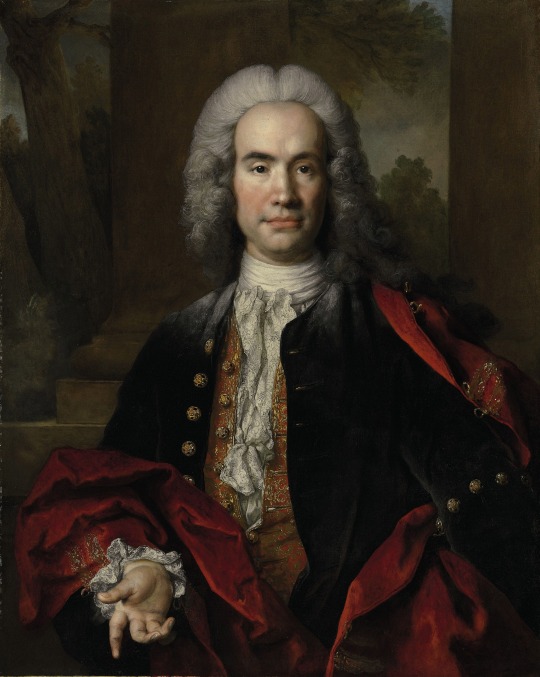
Nicolas de Largillierre - Portrait of Gaspard Gédéon Pétau, Seigneur de Maulette, half-length, in an embroidered blue waistcoat and a red velvet cape
5 notes
·
View notes
Photo
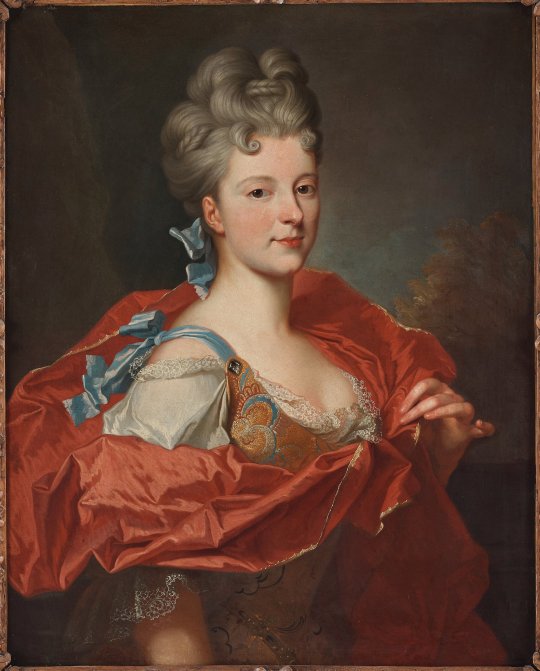
12 notes
·
View notes
Text

Princess Rákóczi, 1720
Nicolas de Largillierre (1656-1746, French)
#dianthus#carnation#painting#portrait#woman portrait#18th century costume#18th century fashion#18th century painting#18th century art#french art#Princess Rákóczi#Nicolas de Largillierre
1 note
·
View note
Text
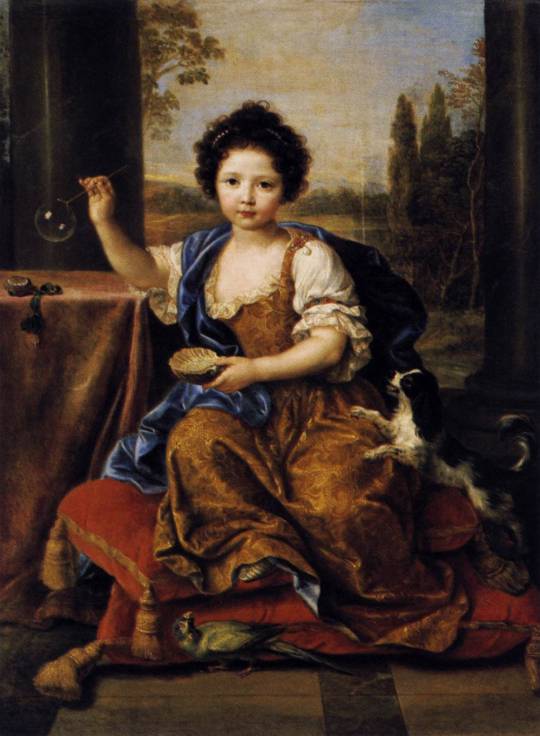
"Louise-Marie de Bourbon, dite Mademoiselle de Tours; La fillette aux bulles de savon"
By Pierre Mignard
Oil Painting, 1681.
Château de Versailles.



PORTRAIT SUBJECT
La fillette aux bulles de savon, or the commonly found English title, Girl Blowing Soap Bubbles, is a portrait of innocence during the Franco-Dutch War.
The child shown is Louise-Marie de Bourbon, the daughter of the Sun King, Louis XIV, and his Maîtresse-en-titre, Françoise-Athénaïs de Rochechouart (Madame de Montespan). I'm sorry, I don't know why they popped off with the names like that when they're planning to reuse Marie and Louis fifty times over ptdr. Louise-Marie, affectionately known as Toutou, was an illegitimate birth (1674), later legitimized by her father when she was around two years old. She held the title of Mademoiselle de Tours from then until her untimely death in 1681.
According to sources, Mignard's painting of the six-year-old girl was finished posthumously. But, her innocence is held delicately, frozen in time on canvas.

THEMES OF CHILDHOOD INNOCENCE (TL;DR: YAPANESE)
Mignard's choice to paint Louise-Marie as an actual child was uncommon for the time (even centuries later, believe it or not; maybe not so good examples, but for argument-sake: Louis XV by Hyacinthe Rigaud, Mariana Victoria of Spain by Nicolas de Largillierre, Phillip II, Duke of Orléans, Reagent of France by Largillierre, and Élisabeth Charlotte d'Orléans, "Mademoiselle de Chartres" by Largillierre -- apologies for throwing you strays, man, I'm trying to finish writing this and your children portraits were on the same website next to each other x), as young royalty are painted either as babies (unbreeched/baptize gown) or as tiny adults (fixed in uncomfortable poses and wearing clothes a monarch would), no in between. Here, Louise-Marie is playing with bubbles, her dog jumping towards it, and she looks carefree, still with chubby cheeks of rose. It doesn't help much that children were seen as heirs to the family fortune, especially during a time when parents had multiple kids due to illness (premature death) and bringing in income (need I explain more... *cough cough* coal mines... a bit anachronistic, sorry breaker boys, some other time we'll discuss y'all).
A painting such as this one, showing a realistic human experience from a royal status and that of a child BEING a child, innocence still intact, is quite important, even in today's form. We take childhood for granted, and kids are forced to grow up despite having more rights now than before. It can be a portrait to remind us that innocence is vital (a lack of childhood is detrimental as the experience is needed in order to mature mentally and emotionally when entering the teen and adult stages of life), but also that we as humans weren't so different from back then (sure, you can claim we bathe more than they do despite your husband still not washing his ass, but my heavens, did the thought 'wait, they had bubbles back then' ever occur to you?).
Genuinely, I was going to pull a La Muse Verte (the post where I briefly explained the history of absinthe) and go into the history of bubbles... because you gotta admit, that'd be fun for the both of us. However, delving into the background and theme of this painting became more heartbreaking for me. The bubble idea isn't gone, but it'll be postponed as a full history lesson post (and, yes, Mignard's painting of the immortalized Toutou will be recycled).

FURTHER READING (EXTRA SYMBOLISTIC DETAIL)
Plenty more symbolism is present, but I highly recommend you all check out L'Art en Tête's in-depth article on Mignard's beautiful portrait. I did regurgitate some of the author's points in this because I thought they were brilliant, and you can tell they have an art-history degree, so I'm begging you to go over there for more detail if interested!

#art#painting#oil painting#artwork#history#french#french art#17th century#1600s#1600s art#late 1600s#17th century art#baroque#Pierre Mignard#Château de Versailles#versailles#Royalty#French history#louis xiv#sun king#symbolism#louise-marie#mademoiselle#art history#house of bourbon#early modern period#kingdom of france
6 notes
·
View notes
Text

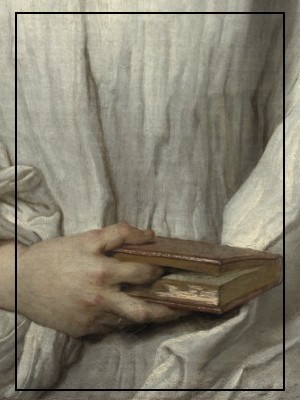




Nicolas de Largillierre. Elizabeth Throckmorton, Canoness of the Order of the Dames Augustines Anglaises, 1729 | John Wilkes, Temple of Minerva, 1829 | Caravaggio, Saint Catherine of Alexandria, 1598 | Euripides, from Grief Lessons: Four Plays; translated by Anne Carson
Annabeth Chase x Art Pieces
#pjo#annabeth chase#heroes of olympus#hoo#percy jackson#riordanverse#cabin 6#daughter of athena#annabeth chase aesthetic#aesthetic#creations
60 notes
·
View notes
Text

Études des maines (1715)
Nicolas de Largillierre
Oil on canvas
6 notes
·
View notes
Text

Portrait of Thomas Germain and His Wife
Nicolas de Largillierre, France, 1736. Oil on canvas.
This canvas represents the goldsmith Thomas Germain (1673–1748) inside his workshop at the Louvre with Anne-Denise Gauchelet, his wife. The ‘Prince of Rocaille’, as he became known, was appointed sculpteur-orfèvre du Roi in 1723, a position identified in the inscription in the letter on top of the table: ‘À Monsieur/Monsieur Germain/Orfèvre du Roy/aux galleries du Louvre/à Paris’. This commonly designated ‘official portrait of the artist’, realistic in style, preserves the sense of splendour usually associated with the French style of that period.
Some of the objects represented in the composition may be related to known works by the artist, while others, like the large ewer on the table with its serpent-shaped handle, remain unidentified. Thomas Germain (master 1720) proudly points to a candelabrum with satyrs on its shaft. This model would result in a series of identical pieces delivered in Lisbon in 1757 for the court of King Joseph I of Portugal, which were sent by his son François-Thomas Germain (1726–1791). Also on the shelf is a terracotta cherub that is similar to the edges of the terrines supplied by François-Thomas to the Portuguese and Russian courts. On the opposite side, a base of cherubs around a wax trunk may be a variant of the said candelabra. A gesso sphinx finally attests to the goldsmith’s interest in Egyptology, fashionable at the time.
Gulbenkian Museum
8 notes
·
View notes
Text

"François-Marie Arouet" dit "Voltaire" par Nicolas de Largillierre (circa 1728) présenté à l'exposition " La Régence à Paris (1715-1723) - L'Aube des Lumières" au Musée Carnavalet, novembre 2023.
1 note
·
View note
Text
Femme en Bergère by Largillierre 18th c.
Femme en Bergère (1710-1712) by Nicolas de Largillierre
Portrait of a woman as Astrée, probably Mary Josephine Drummond, Condesa de Castelblanco.
Nicolas de Largillierre 1656-1746. Collection de M. H. Deutsch (de la Meurthe).
Femme en Bergère (1710-1712).
As a counterpoint, in the Louis XIV furniture room, to Rigaud’s President Gaspard de Gaeïdan, this woman painted by Largillière appears in…
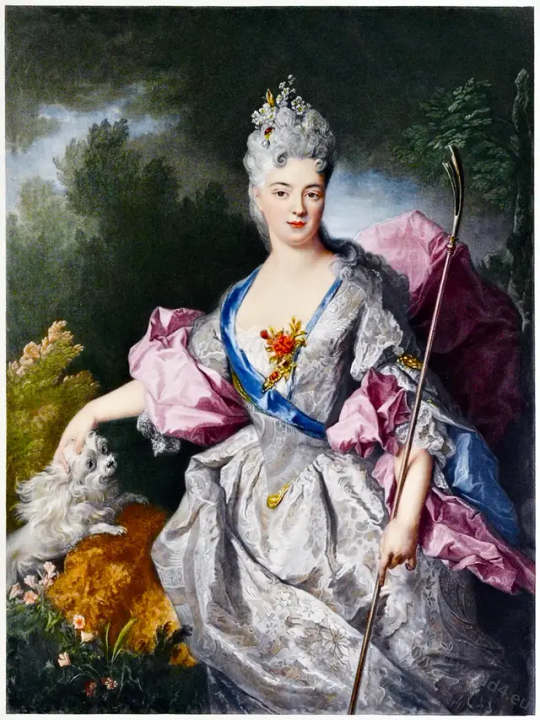
View On WordPress
1 note
·
View note
Text

Nicolas de Largillierre, Portrait of a Lady as Pomona, c. 1710-14. Sold at Sotheby’s New York for $1.23 million.
16 notes
·
View notes
Photo

6 notes
·
View notes
Photo

Portrait of Gabrielle-Émilie le Tonnelier de Breteuil, Marquise du Châtelet, three-quarter-length (c.1735-1740). Nicolas de Largillierre (French, 1656-1746). Oil on canvas.
Largillierre's sitter is opulently but informally dressed and assumes a rhetorical pose, the handling of paint is textured and velvety, the Rubensian palette is autumnal, russet and shimmering with light. Remarkable is the subject of the portrait: a beautiful young woman who gazes skyward -- perhaps contemplating of the stars -- and holds a pair of gold compasses in her right hand while resting her left hand on a celestial globe. Few portraits of women in the 18th century depict them in intellectual pursuits such as astronomy, mathematics, or any of the sciences that were ordinarily the province of highly educated men only. These striking attributes support the traditional identification of the sitter as Gabrielle Emilie Le Tonnelier de Breteuil, Marquise de Châtelet, one of the great intellectual figures of the first half of the 18th century.
17 notes
·
View notes
Photo

Fashion on Canvas, No. 109
Presumed portrait of Madame de Harlay holding a garland of flowers, Nicolas de Largillierre, 1690
oil on canvas
134.7 x 104.5 cm (53 ⅛ x 41 ⅛ in.)
Christie’s
#fashion#vintage fashion#vintage#art#painting#nicolas de largillierre#1690s#oil painting#french art#17th century#portrait#fashion on canvas
9 notes
·
View notes
Text
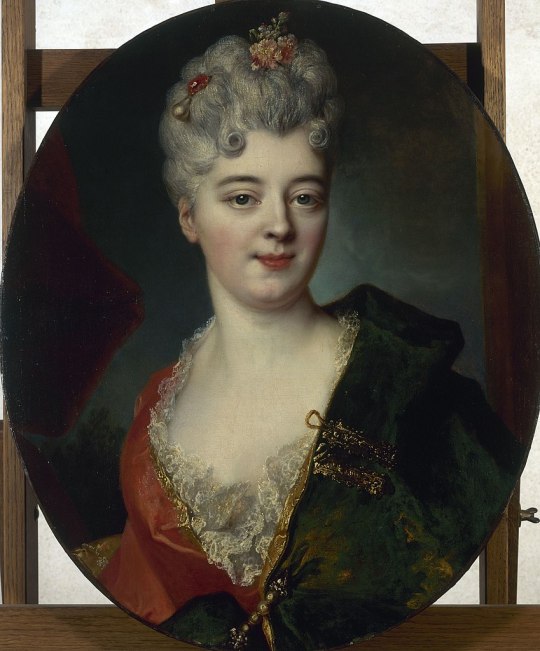
Portrait of a lady presumed to be Elisabeth Delpech, Marquise de Cailly by Nicolas de Largillierre, 1700-1750
#18th century#mdp18th c.#france#18th c. france#mid 18th century#early 18th century#nicolas de largilliere
26 notes
·
View notes
